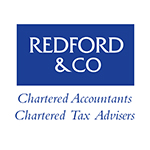Digital tax for companies - what’s on the horizon?
Making Tax Digital will be mandatory for corporation tax in a few years time. If a company is already following the MTD rules for VAT (MTDfV) purposes, isn’t that job done?

Reporting under MTD for CT
Making Tax Digital for Corporation Tax (MTDfCT) involves keeping accounting and some other records in digital form using MTD-compatible software, plus making quarterly online reports of income and expenditure to HMRC. The quarterly filing dates will depend on a company’s accounting period. They’ll need to submit the figures within a month of the end of each quarter. HMRC will respond by providing quarterly estimates of the company’s corporation tax liability.
Who and when?
The plan is for MTDfCT to be mandatory from April 2026, with a pilot scheme from April 2024. It will apply to all UK companies and non-UK resident companies subject to UK CT. Even the smallest companies will have to comply, as will not-for-profit companies such as charities, community amateur sports clubs and societies within the charge to CT. There will be rare exceptions for companies that are unable to file digitally.
MTDfCT is different
MTDfCT will require an automated flow of data from the company to HMRC. While this is similar to MTD for VAT (MTDfV) there are differences. It's wrong to assume that because acompany complies with MTDfV, they won’t need to make changes to cope with MTDfCT. For example, if they use cash accounting for VAT, the figures for CT will differ as these must be recorded on an accruals basis.
What’s new?
MTDfCT will require income and expenditure to be grouped under headings that will differ from those used for general bookkeeping and for MTDfV purposes. What’s more, the data must meet company law requirements.
Recording transactions
The minimum digital record for a transaction will be the date, amount and category of income and expenditure. The categories (yet to be decided by HMRC) are very unlikely to match those a company currently uses for accounting purposes. We know they’ll be similar to those used for MTD for income tax, but with additions such as income and gains from non-trading loan relationships, dividends, participator loans and directors’ benefits. Companies will have to keep some non-financial data digitally too: type of company; standard industry classification; property addresses; Senior Accounting Officer details; breakdown of group structure.
Quarterly filing will allow HMRC to track transactions in near real time. This means a need to pay special attention to compliance. HMRC will be looking closely at dividends and directors’ loan repayments, the timing of which can be critical to CT liabilities. Now is the time for companies to ensure procedures for declaring and recording these are up to scratch.
Year-end procedure
At the end of the company’s financial year the accountant still needs to make the usual adjustments to convert accounting profit or loss to that for CT purposes. The deadline for filing CT returns may be brought forward, but that’s not been decided yet.
Related Topics
-
Should you revoke your 20-year-old option?
Your business has let out a building to a tenant and it is now just over 20 years since you opted to tax the property with HMRC. Should you revoke it so that your tenant no longer needs to pay VAT?
-
Chip shop owner fined £40k for hiring illegal worker
A Surrey fish and chip shop owner has been left in shock after being fined £40,000 for allegedly employing someone who didn’t have the right to work in the UK, even though he conducted a right to work check. Where did this employer go wrong and what can you learn from it?
-
Change to IHT on pensions proposals
HMRC has published a policy statement announcing an important change to its plans to include pension savings in an individual's estate for inheritance tax (IHT) purposes. What’s the full story?


 This website uses both its own and third-party cookies to analyze our services and navigation on our website in order to improve its contents (analytical purposes: measure visits and sources of web traffic). The legal basis is the consent of the user, except in the case of basic cookies, which are essential to navigate this website.
This website uses both its own and third-party cookies to analyze our services and navigation on our website in order to improve its contents (analytical purposes: measure visits and sources of web traffic). The legal basis is the consent of the user, except in the case of basic cookies, which are essential to navigate this website.